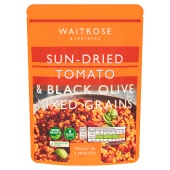Lighter Foods
0 added
Item price
£4.25Price per unit
£5.06/kg0 added
Item price
£3.75Price per unit
£6.70/kg0 added
Item price
£1.00Price per unit
£5/kg0 added
Item price
£1.40Price per unit
£3.38/kg0 added
Item price
£1.95Price per unit
£7.80/kg0 added
Item price
£2.75Price per unit
£7.86/kg0 added
Item price
£1.40Price per unit
£3.38/kg0 added
Item price
£3.75Price per unit
£6.70/kg0 added
Item price
95pPrice per unit
£5.59/kg0 added
Item price
£3.75Price per unit
£6.70/kg0 added
Item price
£3.75Price per unit
£6.70/kg0 added
Item price
£3.75Price per unit
£6.70/kg0 added
Item price
£2.80Price per unit
£11.20/kg0 added
Item price
£3.50Price per unit
£4.38/kg0 added
Item price
£3.75Price per unit
£6.70/kg0 added
Item price
£3.75Price per unit
£6.70/kg0 added
Item price
95pPrice per unit
£5.59/kg0 added
Item price
£2.60Price per unit
£8.67/kg0 added
Item price
£2.50Price per unit
57.5p/100g0 added
Item price
95pPrice per unit
£5.94/kg0 added
Item price
£1.50Price per unit
£7.50/kg0 added
Item price
£4.30Price per unit
74.1p/100g0 added
Item price
£3.75Price per unit
£6.70/kg0 added
Item price
£1.75Price per unit
£4.38/kg0 added
Item price
£5.50Price per unit
£2.21/kg0 added
Item price
£4.00Price per unit
£2.41/kg0 added
Item price
£3.90Price per unit
£5.87/kg0 added
Item price
£2.50Price per unit
£5.89/kg0 added
Item price
£1.40Price per unit
£5.60/kg0 added
Item price
£1.75Price per unit
£9.22/litre0 added
Item price
£2.50Price per unit
£6.03/kg0 added
Item price
£2.80Price per unit
£70/kg0 added
Item price
£1.40Price per unit
£5.60/kg0 added
Item price
£2.50Price per unit
£6.03/kg0 added
Item price
£4.00Price per unit
45.5p/100g0 added
Item price
£1.40Price per unit
£5.60/kg0 added
Item price
£2.10Price per unit
£10.50/litre0 added
Item price
£1.75Price per unit
£5.84/kg0 added
Item price
£4.00Price per unit
£13.80/kg








































